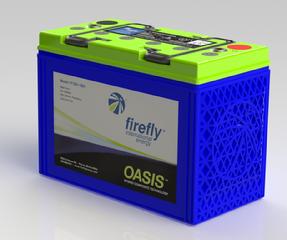Table of Contents
Partial State of Charge
Partial state of charge (PSoC) refers to the state of a lead-chemistry battery when it is left below 100% State of Charge (partially discharged), which lead-chemistry batteries do not like.1)
Since state of charge is measured “on the way down” from full charging PSoC can result from:
- failure to fully charge lead batteries (typically failure to hold Vabs for sufficient duration, widespread); or
- fully and correctly charging but then allowing the battery to rest without a Float (maintenance) charge (less common)
Both long periods of PSoC and incomplete charging are damaging to lead acid batteries (ie, battery murder), usually due to “hard sulfation” (see below).
optimal deep cycling
In a perfect world, lead-acid batteries (both flooded and AGM) would be discharged no further than 20% then fully charged again2) each day. In some studies this 20% depletion yields the most Ah/$. The downside is carrying around a lot of “dead lead”, capacity that is never used.
In actual usage it is more common to discharge to 50% SoC. This allows 2.5x the power to be used overnight at the cost of longevity.
It is easier to get the batteries fullly charged each day when they are overpaneled, but that trades battery health for less reserve for days of poor insolation.
practical deep cycling
 In practice, it may be “good enough” to get back 100% SoC every other day or even every third day. One should expect to get fewer duty cycles when getting back to 100% SoC less frequently.
In practice, it may be “good enough” to get back 100% SoC every other day or even every third day. One should expect to get fewer duty cycles when getting back to 100% SoC less frequently.
Some premium AGM like Lifeline, Northstar and Odyssey may be able to tolerate longer stretches of PSoC although capacity will be reduced up to 30% during those periods.3)4) The only lead-acid battery proven to handle PSoC with minimal harm is the carbon-foam Oasis Firefly AGM.5)
sulfation
The mechanism for PSoC-driven battery damage is Sulfation. This is the depositing of lead sulfate on a battery's lead plates during discharge. When charged appropriately, this “soft” sulfate dissolves back into the electrolyte to begin another cycle. If the sulfation is allowed to stay on the plates too long (or at too low a voltage) it can become “hard” sulfation which permanently6) damages battery capacity.
Rolls Battery explains the normal process of soft sulfation like this:
In normal use, battery plates are getting sulfated all the time. When a battery is being discharged the lead active material on the plates will react with the sulfate from the electrolyte forming a lead sulfate on the plates. When there is no lead active material and or sulfate from the electrolyte remaining the battery then is completely discharged. After a battery reaches this state, it must be recharged. During recharge, the lead sulfate is reconverted into lead active material and the sulfate returned to the electrolyte.7)
A comparison might be made with a pot that was used to cook oatmeal; if rinsed soon after cooking it is easy to clean off. If the oatmeal is allowed to dry onto the pot overnight it can turn into a concrete-like coating.
To avoid hard sulfation and dramatic damage to battery capacity, fully charge the battery to 100% SoC as often as possible. Daily is optimal.